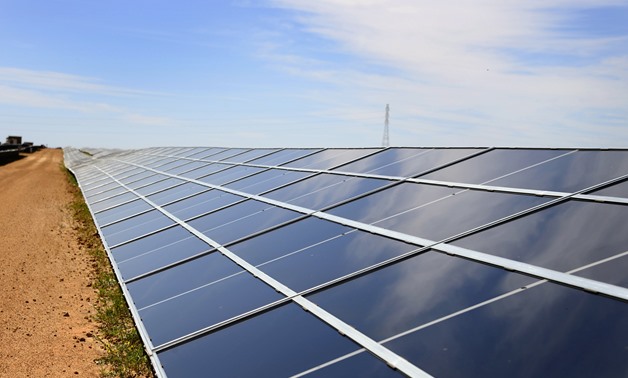
Solar plant- Reuters
CAIRO – 25 June 2018: About 1450 megawatts (MW) of solar energy from power plants in Benaban project in Aswan Governorate will be linked to the national electricity network during the first quarter of 2019, an official source at the Ministry of Electricity and Renewable Energy said.
The Benban solar park is set to generate the equivalent of 90 percent of the energy produced by Aswan’s High Dam. Already home to the most important electricity production plant in Egypt, Aswan is set to bear and implement Egypt’s dream of having 20 percent clean energy by 2022.
The source clarified that the 1450 MW will be produced from 29 solar power plants, noting that around 32 Egyptian-foreign alliances started the construction of these plants.
The commercial operation of the first solar power plant with a capacity of 50 megawatts from the Benaban area of Aswan was completed to be fully capable of generating energy to the national electricity network, the source said.
The source pointed out that the construction of the second solar plant in Benban started and is scheduled to be completed by the end of August with a capacity of 50 MW, noting that Benban accommodates 40 solar stations.
“Benban is the largest solar power plant worldwide,” the source stressed.
The total energy generated from renewable energy plants (solar and wind energy) during May reached 1.25 percent, and the percentage of capacity on the national electricity network is up to 1.75 percent per day.
Egypt’s national strategy targets to bring the contribution of electricity from renewable energy to 20 percent by 2022, the source stated.
In April, Aswan Governor Magdy Hegazy and the Chinese consul to Cairo inaugurated four new solar power plants in Benaban project in Aswan Governorate, with a total capacity of 186 megawatts and an investment cost of $180 million (LE 3.17 billion).
The consortium which will construct the plants includes four companies of different nationalities; Egyptian, Chinese, Spanish and Saudi, the governor said.
In mid-March, Electricity Minister Mohamed Shaker inaugurated the first phase of Egypt’s Benban solar park.
The Benban power plant will cover Egypt’s electricity needs and edge the country forward on its path to becoming the region’s energy hub.
Benban, built in the eastern region of the Sahara Desert, is set to produce between 1.6 and 2.0 gigawatts of solar power by mid-2019. Engineer Ahmad Fathy, head of Upper Egypt's Projects Sector in the Egyptian Electricity Transmission Company, told Egypt Today that after the effective launch of Infinity, work will start on Vas Station.
Currently, 29 projects have been financed at a total of $1.8 billion, producing almost 1.5 GW of solar power, on the 14.3-square-mile plot of land.
Meanwhile, The Ministry of Electricity and Renewable Energy will inaugurate the world’s largest assembly of wind turbines in Gabal El-zeit in the Red Sea governorate by the end of this month, with a total cost of LE 12 billion ($670.64 million).
On June 12, Egypt cut its electricity subsidies, raising prices by an average of 26 percent in the 2018-2019 fiscal year beginning July.
According to Minister of Electricity Shaker, the overall increase does not exceed 26 percent, while the average hikes in bills for households amount to 24 percent.
The minister also affirmed that the new hikes save the country from potential losses that might reach LE 109 billion.
He added that users of the first bracket of the housing use segment only bear 18 percent of the total cost of the bill; as they pay LE 12 while the actual bill costs LE 65.
Egypt embarked on a bold economic reform program that included the introduction of taxes, such as the value-added tax (VAT), and cutting energy subsidies, with the aim of trimming the budget deficit.
The country has floated its currency in November 2016 before it clinched a $12 billion loan from the International Monetary Fund (IMF).
The IMF loan helped the state’s foreign reserves to rebound by receiving the first three tranches of the loan with a total value of $6.08 billion.

Comments
Leave a Comment